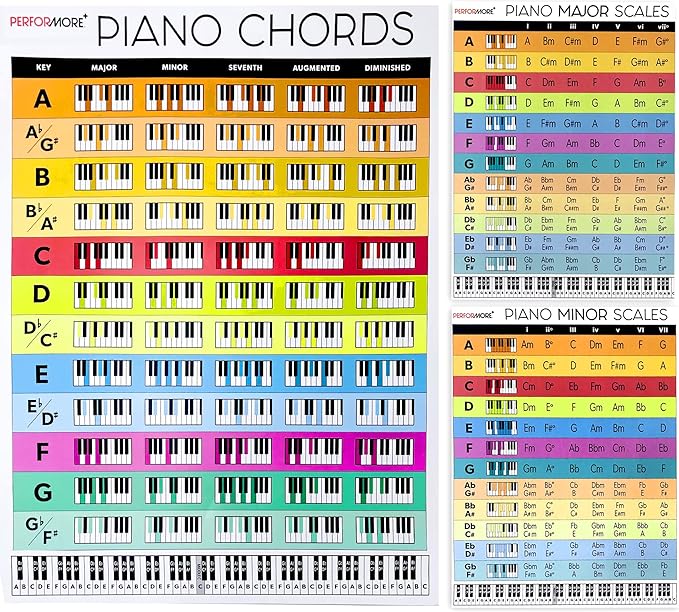Piano chords: those beautiful combinations of notes that unlock endless musical possibilities. But let’s be honest, memorizing them can feel like trying to remember your grocery list after a caffeine-deprived day. Fear not, aspiring pianists! With the right tricks and a dash of creativity, you can conquer those chord patterns and start playing with confidence.
Step 1: Understand, Don’t Just Memorize
Before blindly memorizing finger positions, grasp the building blocks of chords. Learn about major and minor intervals, root notes, and how different combinations create distinct sounds. This deeper understanding will make memorizing patterns more meaningful and easier to recall.

Step 2: Visualize and Conquer
Think of your hands as tiny explorers navigating the keyboard kingdom. Visualize the shapes each chord creates – are the notes close together or spread out? Are they on white keys only, or do they venture into the black key territory? This visual association will solidify the pattern in your mind.
Step 3: Group and Conquer
Don’t try to swallow the entire keyboard at once. Start with small groups of chords that share similar finger positions or patterns. For example, begin with the C, F, and G major chords – all white keys! Mastering these will build confidence and momentum for tackling trickier chords later.
Step 4: Make it Musical, Not Mechanical
Practice doesn’t have to be boring! Instead of mindlessly repeating isolated chords, use them to create simple melodies or chord progressions. Find songs you love and try playing the basic chords. This practical application makes memorization fun and reinforces the musical context of the chords.
Step 5: Spice it Up with Mnemonic Magic
Create silly stories or mnemonics to link finger positions with chord names. For example, the C major chord (C-E-G) could be “Cool Elephants Glide.” The wackier, the better – your brain will thank you for the entertainment!
Break it Down
Instead of trying to memorize entire chord progressions at once, break them down into smaller, more manageable chunks. Focus on memorizing one chord at a time before moving on to the next. Once you’ve mastered each individual chord, practice transitioning between them smoothly.
Use Mnemonics
Mnemonics can be a helpful tool for memorizing chord patterns. Create mnemonic devices such as acronyms or visual associations to help you remember the order of chords in a progression. For example, you might use the phrase “All Cows Eat Grass” to remember the order of chords in a C major scale (C, Dm, Em, F, G, Am, Bdim).
Repetition is Key
Like any skill, memorizing piano chord patterns requires practice and repetition. Set aside dedicated practice time each day to work on memorizing chord progressions. The more you practice, the more familiar and comfortable you’ll become with different chord patterns.
Apply Chords to Songs
One of the most effective ways to reinforce chord patterns is to apply them to songs you’re learning or playing. Choose songs that feature the chords you’re working on and practice playing along with the music. This not only helps solidify your knowledge of chord patterns but also allows you to see how they are used in a musical context.
1 thought on “How to Memorize Piano Chord Patterns Like a Pro”